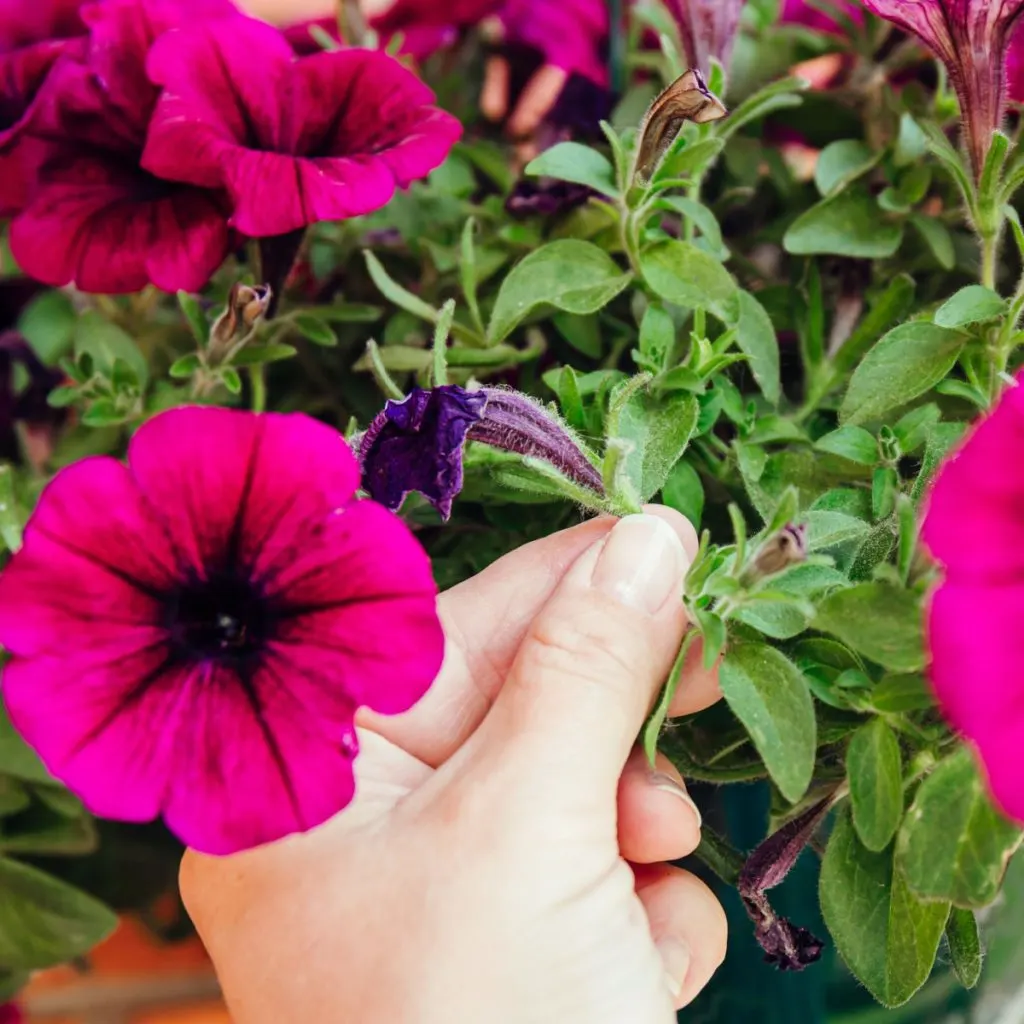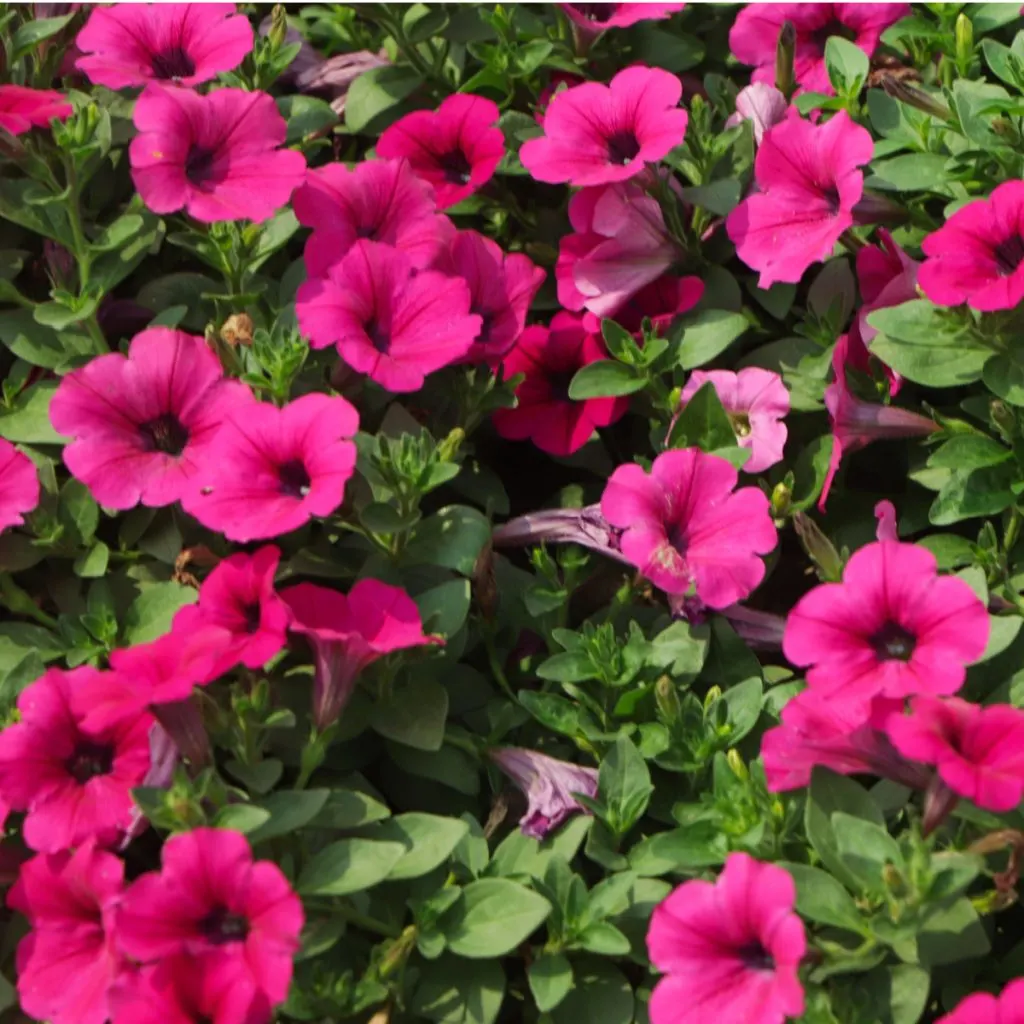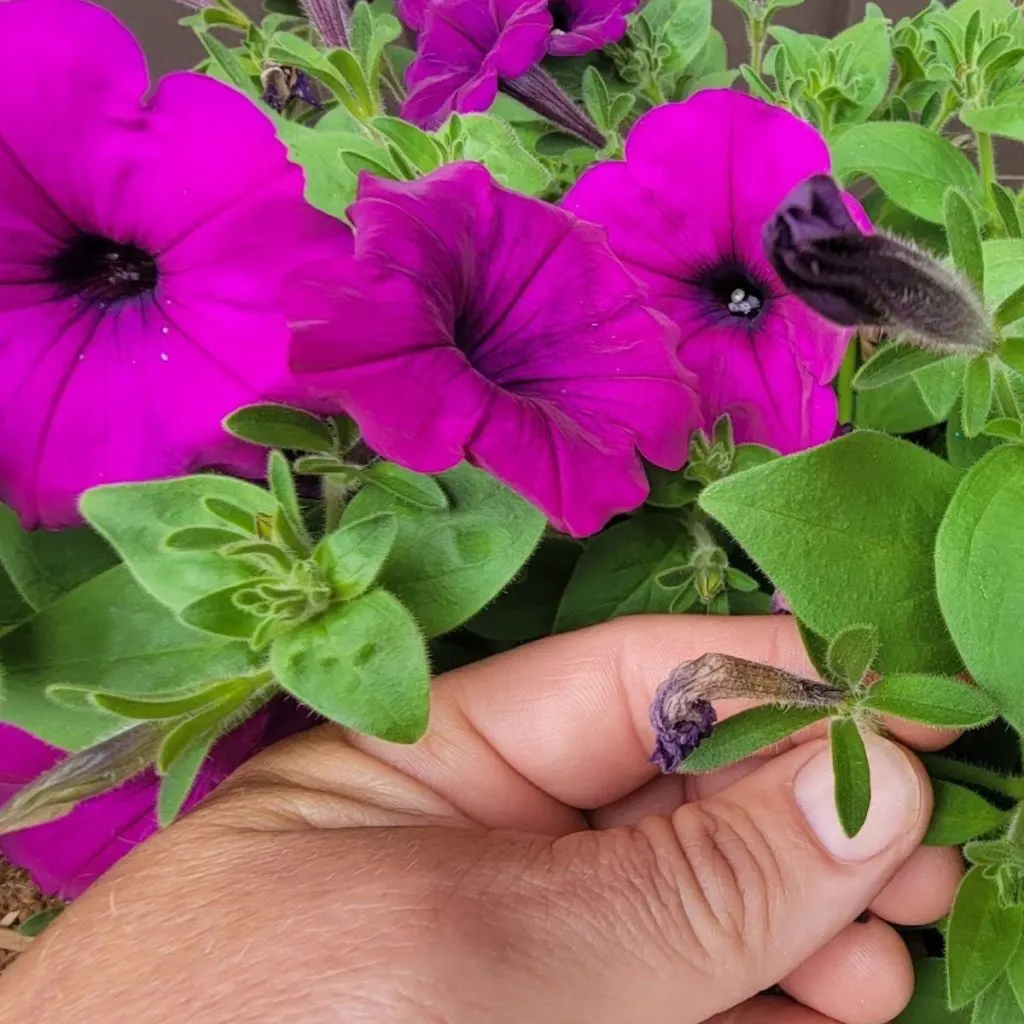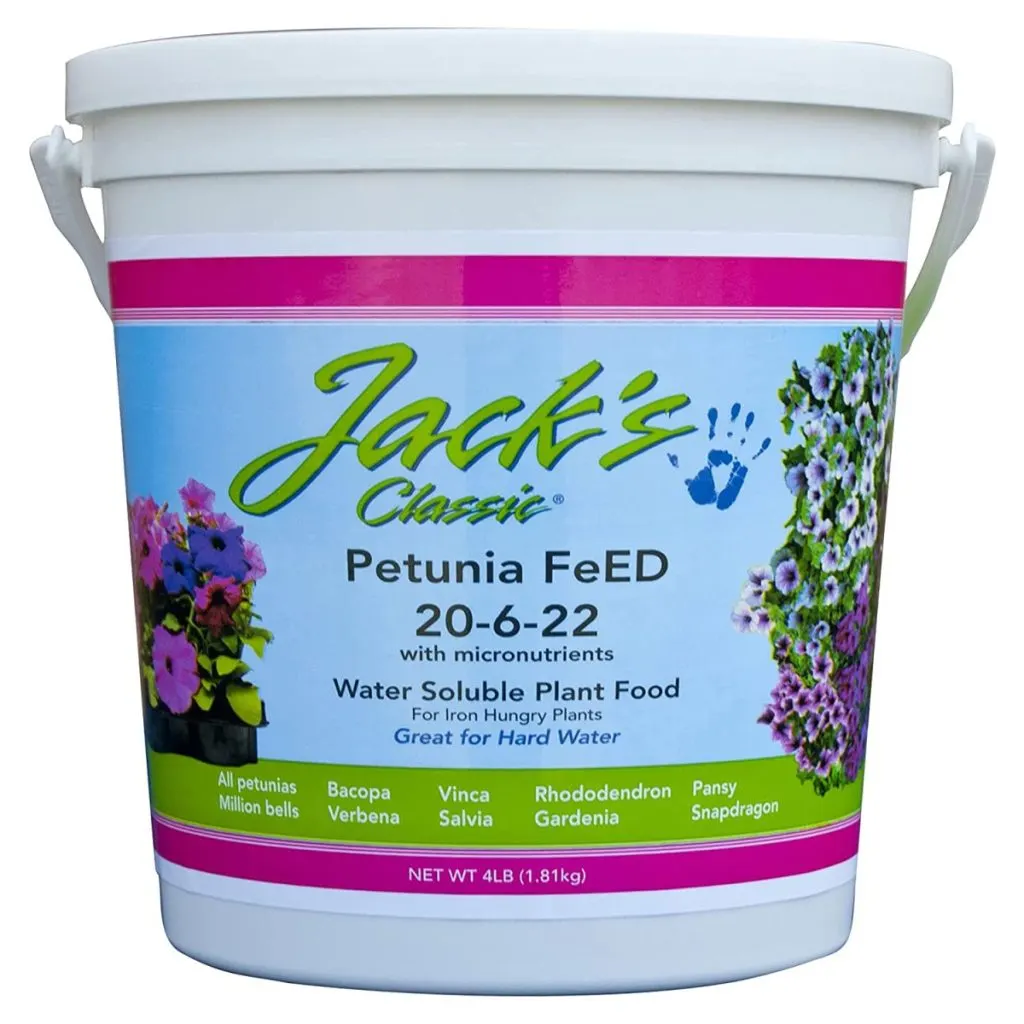Did you know that one of the best ways to keep your petunias blooming bright, big and beautiful all summer long is to deadhead them on a regular basis?
Petunias can produce an amazing amount of colorful blooms on their wiry stems and branches. Whether they grow in hanging baskets, flowerbeds or in pots and containers, they are the perfect annual for bringing life to an outdoor space.
But all too often, these gorgeous flowering annuals begin to lose their luster as summer hits full stride. Plants that were once covered in blooms in late spring suddenly now find themselves with fewer and fewer flowers with each passing day.

Could it be a lack of water? Do the plants need a dose of fertilizer? Although both water and fertilizing do indeed play a key role in a petunia’s long term performance, as surprising as it might be, many times petunias stop blooming because they are simply overloaded with too many old, fading blooms.
The good news is that by removing old flowers from your petunias on a regular basis, you can help your plants continue to push out new blooms. But, as you will see below, the real secret to success is to remove them in just the right way to help your plants bloom better than ever!
The Best Way To Deadhead Petunias
So why is removing the old blooms from petunias so important in keeping them flowering? The main reason is that as long as the old fading flowers remain, they consume valuable energy from the plant. Energy that should instead be going towards creating new buds and blooms.
Even though there is no ability to heal a fading petunia flower, the plant will continue to do so in a futile attempt to save it. First, it will spend energy on healing. But if left on long enough, it will then spend even as the flower head then forms a seed head.
Unfortunately, the plant will continue to do this right up until the point the dying bloom, seed head and stem fall off. And this is exactly why it’s so important to deadhead your plants as soon as the flowers begin to fade. But when you do, you need to remove not just the flower, but the stem attached to it as well.

How To Correctly Deadhead Petunias
When deadheading petunias, avoid only pulling the flower from the stem. Remember that as long as the small stem stays in place, the plant will still send energy to it. Instead, pinch back behind the petunia bloom all the way back to the next set of leaves.
By doing this, you remove the old flower and the seed bulb stem behind it. Once this is gone from the plant, it will then begin to spend its energy on creating a new bud. This can be done quite easily with your fingertips without the need for scissors or pruners.
So how often should you deadhead? As long as you are removing old blooms at least once a week, it is more than enough to keep the plant producing new buds. And since you are removing the blooms before they form seeds – they are perfect for the compost pile!
In addition to deadheading, you can also prune back petunia stems every month or so to force them to grow stronger and less stringy. This also helps to recharge the plant with energy by removing excess foliage.

More Ways To Help Petunias Bloom Big – The Best Way To Deadhead Petunias
Fertilizing & Watering
As mentioned earlier, don’t forget that proper watering and fertilizing are still important to keep your petunias flowering. Although conserving energy by deadheading is the first big key – giving your plants the nutrients and moisture they need to flower will go a long way to big blooms as well.
Petunias are heavy feeders from the soil. Because of this, they can quickly drain the soil of the nutrients they need most for blooming. This is especially true for petunias growing in pots and containers where they have a limited amount of soil.

For best results, feeding your plants throughout the summer months with a liquid fertilizer is a must. But what you feed them matters! Avoid using all purpose fertilizers that have equal amounts of nitrogen, phosphorous and potassium.
To flower big, petunias actually require more nitrogen and potassium instead of phosphorous. This is different than most other annuals. These two nutrients are vital for helping the plant to produce buds and form flowers.
Look for a liquid fertilizer that has at least double the amount of these two nutrients versus the phosphorous. This simple fertilizing trick can make a huge difference in how well and how long your petunias bloom! Affiliate Link: Petunia Liquid Fertilizer Jack’s Classic 20-6-22 Petunia FeED Water Soluble Low Phosphorous Plant Food
Watering – The Best Way To Deadhead Petunias
Finally, petunias need a steady source of water to keep their roots, stems and leaves healthy. But, and this is important – not too much! See: How To Use A Moisture Meter – The Perfect Way To Know When To Water!
Always check the soil a few inches down by the roots before watering. Overwatering can swell the roots, which can then make the plant unable to take in moisture or nutrients. It can also lead to the stems rotting off.
One of the best ways to know exactly when to water is to use an instant moisture meter. They make the chore of watering a breeze – and easily prevent over or underwatering issues! Affiliate Link: XLUX Soil Moisture Meter, Plant Water Monitor
Here is to deadheading your petunias this year! And even more – to keeping them blooming big all summer long! For even more tips on keeping petunias blooming, be sure to check out: 3 Simple Secrets To Keep Your Petunia Baskets Blooming Big All Summer Long.
Simple Garden Life
Follow Our Facebook Page For Even More Great Tips! Simple Garden Life Facebook Page
Simple Garden Life is a website dedicated to keeping gardening fun, simple and enjoyable! We publish two new articles each week along with a new garden podcast episode every two weeks. This article may contain affiliate links.
